This is about Onam – the harvest festival of Kerala. This is more than just a show of plenty… read on to find out why it is so dear to me and many others.

Often I start my posts here with a picture of food after all this is a food blog. But to me, food is not just about cooking, or what we eat. It is also about memories, of shared times and a reflection of our culture and times. It plays a huge role in shaping our lives. So today I am going to meander through the lanes where I spent time as a child, where some of these fond memories were made.
If you were from Kerala you would recognize the season that brings this kind of nostalgia. It is Onam – the festival celebrated by everyone in Kerala. Onam is dear to all Malayalis, as we like to call ourselves; it is a celebration of the glorious era when there was no poverty, no inequalities, and no crime (no kidding!).
As the story goes …
Long ago, people were happy living in a land known as Kerala aka “Gods own Country”. This land was ruled by the demon king, Mahabali, or Maveli as we refer to him. He was fair, just and revered by all his subjects. Imagine the state of gods sitting in their heavenly abode looking down on earth to find miserable human souls to shower their benevolence. Misery is in short supply – not a good time to be a god!
Well, as you can imagine, the gods in Heaven were not very happy with this turn of events. Why would humans seek godly blessings when their king provides everything they can ask for? So in the true heavenly fashion, the gods hatched a plan to oust Maveli. They approached, who else, the divine mother, goddess Aditi. Distraught by her children’s plight Aditi approached lord Vishu, the preserver, and pleaded to maintain the status quo.
While all of this was going on, Maveli was performing a ‘yajna’, to become more powerful. As part of the rituals, Brahmins were granted alms. In comes Vishnu, as a small brahmin boy named Vamana. Maveli agrees to grand Vamana his wish of 3 paces of land.
Mavali’s guru, Sukracharya, was very wise and sensed that something was amiss. But Maveli was loath to break his word for him there was no greater sin than going back on one’s word.
In front of his eyes, Vamana grew to his immense form. With his first step he covered the sky, and the second covered the netherworld. Realizing that there is no place left for Vamana to place this third step, Mahabali offered his head as a sacrifice to save the world.
Impressed by this stoic king Vishnu granted him a boon before stepping on his head and banishing him to the neatherworld. As a true king devoted to his kingdom and his people, Mahabali wanted to return and visit his subjects once every year. This day of the King’s return is marked as Onam and Malayalis prepare for this yearly visit of their King wherever they are.
Don’t believe it?
This is the story, with a dose of irreverence, as told in Bhagavatha Purana. You can dispute it saying that Mahabali did the yajna on the banks of the river Narmada or that Kerala rose out of the ocean during the incarnation of Parasurama. Parasurama being the 6th incarnation of Vishnu and right after Vamana the 5th incarnation.
It is easy to find parallels between the regional stories and legends of India and the stories in the epics Mahabharatha and Ramayana. To me it is pointless to ask which came first or which is the true version, and even if there is a true version.
What is important and the reason I celebrate it is that this festival is that it is about humans, it is about a ruler who was devoted to his subjects. This is about a time when mortals rose above their typical failings without divine intervention. It is probably one of the stories where the humbling of immortal powers is celebrated.
The 19th century Kerala was the land where one of the worst forms of Indian Casteism was practiced. But the golden days of Maveli were etched in the collective consciousness of the region. May be that was what gave more impetus to social reformers like Chattambi Swamikal, Sri Narayana Guru, Sahodaram Ayyappan, Ayyankali, Vaikkom Maulavi, Mannathu Padmanabhan and so on..
Or maybe I drank the Kool-Aid of equality as a child. But it is one that I am happy to hold on to and work for.
Onam of my childhood
My early memories include going around with friends looking for Thumba flowers. The flower itself is not much to write about, but the leaves have a special fragrance which you get a whiff of when you pluck them. It was a mini adventure for all of us little kids. These were the few times when we were allowed and even expected to go into and explore someone else’s land.
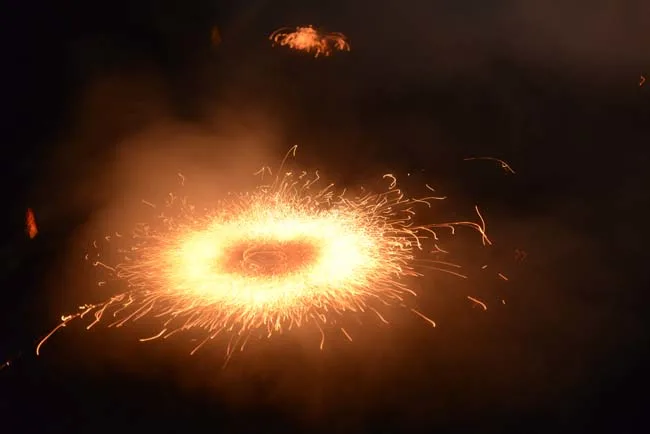
As a little girl, I used to wake up to firecrackers and welcome songs on this day. Try as hard as I could, my neighbors always woke up earlier. Rushing down we used to find that mom and dad had already decorated the yard and has the steam cakes waiting for us. Years later we spent one Onam in Kochi, now a busy city, waking up to the sounds of the neighboring family ushering in Maveli. The matriarch of the house symbolically ushering in Maveli while the kids and grandkids singing traditional welcome songs. The lady who led the rituals is no more, but that one morning is still etched vividly in my memories.
Pookkalam
Preparation of Onam starts 10 days before the Thiruvonam, on the Atham day of the Malayalam month of Chingam. This is the first day to start decorating the front yard with the flower carpet known as pookkalam. Traditionally only flowers and leaves were used to make pookkalam. Day by day the pookkalam becomes larger and larger and more elaborate.
The path from the street to the main door is lit and marked with designs and a floral decorated throne is made for Maveli. A special steamed bread – valsan or ela-ada – is also offered. After a quick breakfast of valsan, we kids were allowed to design and create our own floral carpet.
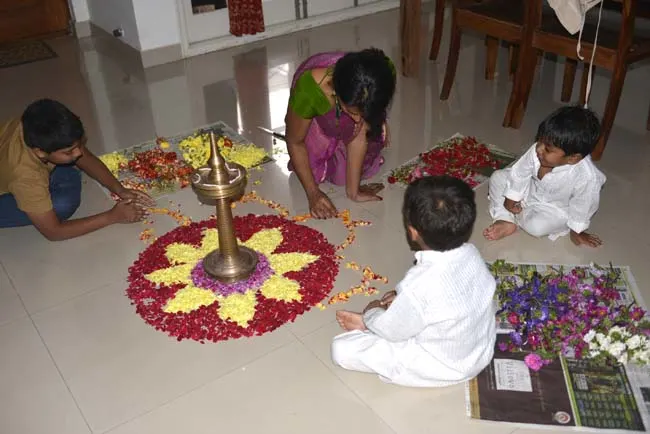
Nowadays the pookkalam competitions have become an important part of the festivities, pushing creative boundaries. Flower from nearby states flood the markets and there will still be a shortage. In keeping with times, this was what I and the kids did a few years back. Bags of flowers from the market depetaled and made into a welcome carpet for Maveli in Bangalore!
Onathappan
Another fun activity was making Onathappan or thrikkakkara appan. Onathappan is the tall pyramid in the middle of the pictures here. For some it as a symbol of Vishu as Vamana, as the Vishnu the main deity of the Thrikkakkara temple. Many others will tell you that it is a representation of maveli who you usher into the homes from beyond the threshold. Regardless of the symbolism, the fact is that it is fun and messy project to do at home.
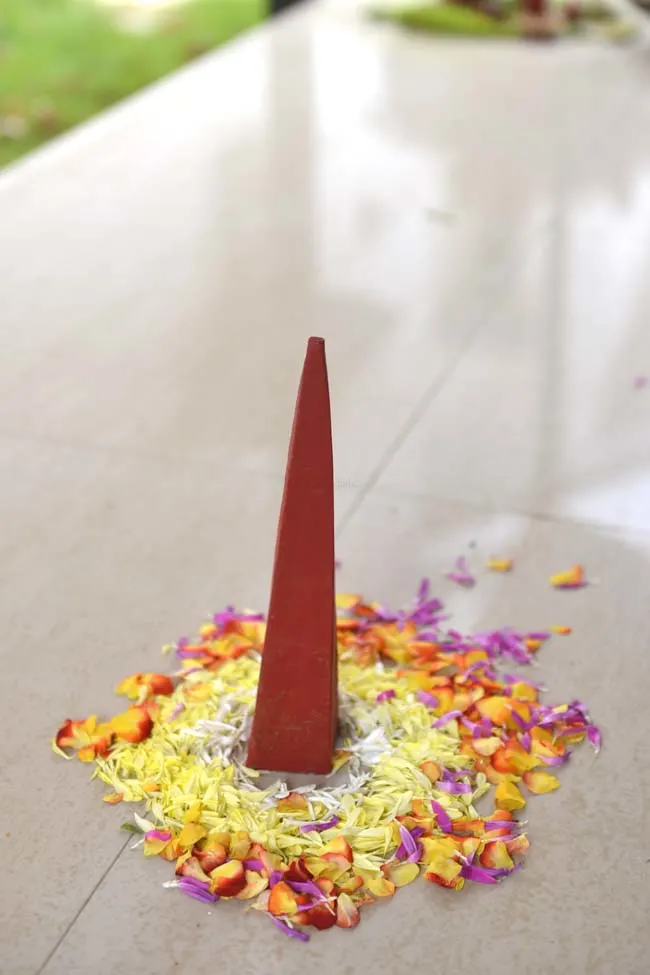
Kunjupennu Chechi, my parent’s neighbor, used to get clay for my mom every year until she left us and moved on to the other side of the veil of time. People move on and some traditions come to an end, while others take root. One summer the kids and I decided to make our Onathappans with boxed clay and painted it red. It stayed with us for a couple of Onams till we moved. Ours were not as good as the ones in the pictures but making it was definitely more fun.
Traditionally, fresh clay is collected and shaped into these tall pyramids, one larger than the rest. The leftover clay is used to make other figurines that used to be displayed in the front yard. Every year these are destroyed after the festival to make way for new ones next year. There is a cycle of life and rebirth symbolism there, but with clay Onathappans from the market the lifespan of an Onathappan becomes longer. As long as we are recycling and reusing who am I to complain!
As a community
Onam was not just a family festival either. Villages and towns used to conduct their own Onam gatherings and competitions. During the Onams spent at my grandparents’ home, this was where we spent our Onam mornings. The child in me loved the idea of watching and maybe even participating in the festivities. The sack race and “Idly eating” competitions were the most fun to watch as were the arrival of “Puli”, or people dressed up in tiger costumes. Looking back I think it was an easy way for the aunts to keep us kids out of the kitchen while the big feast was being prepared.
Food
No celebration is complete without the feast. How can Maveli leave happy if his subjects are not well fed ? The traditional dishes were served for lunch. Rice, vegetable curries, pickles, yogurt and the desert of choice – pradhaman. Newcomers like sambar, and dishes like theeyal and masala curry were not fancied on this day. Everything was served on a freshly cut banana leaf. The highlight for us, kids, were the payasams. Oh, and us being from southern Kerala it was always a vegetarian feast. The day after you could indulge in non veg, but not on Onam day. I am not sure what Maveli’s take is on that, but I still follow that.
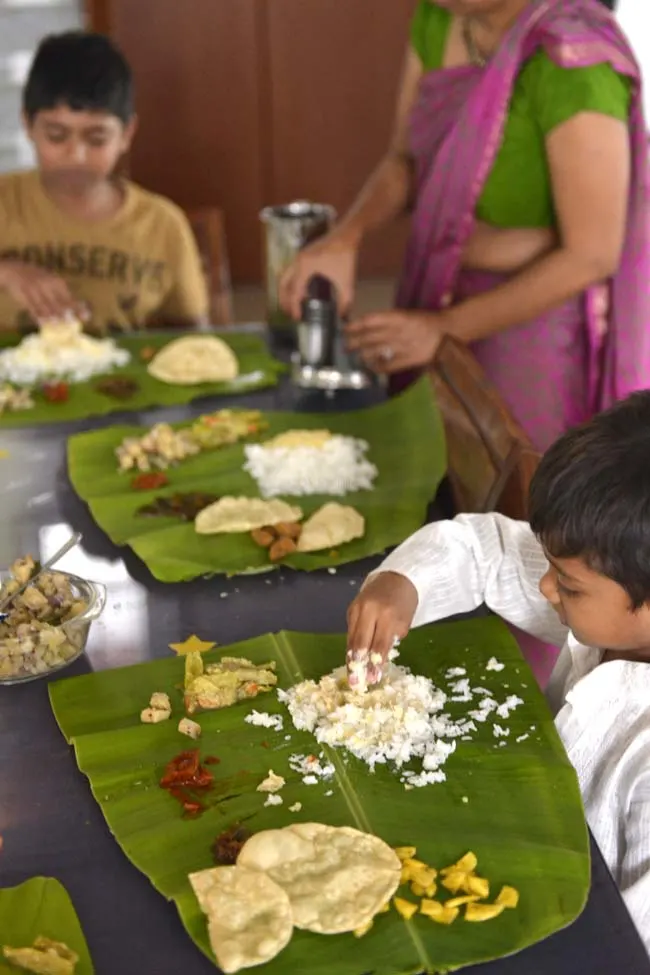
This is one meal that calls for banana leaves, and of course hands. My Onam feasts are not usually elaborate, but I have friends and family who make 20 odd dishes for this meal. Big or small there are a few things that I make for every Onasadya (feast)- Puli Inji, Parippu and Payasam. There is a reason behind each Puli Inji because mom always made it and believe it or not that is one aroma that I associate most with Onam. Parippu is there because my late FIL had always said that is a required dish and the boys in the house love it. Payasam is my little indulgence and well no celebratory Kerala meal is complete without pradhaman?.
Talk of food is not just limited to the big feast on the day of Onam. Preparations (read food) start days in advance from the start of Atham or earlier. We make a variety of plantain chips and other savory goodies. Nostalgia kicking in, and I am on a mission to create some of these memories for my children as well.
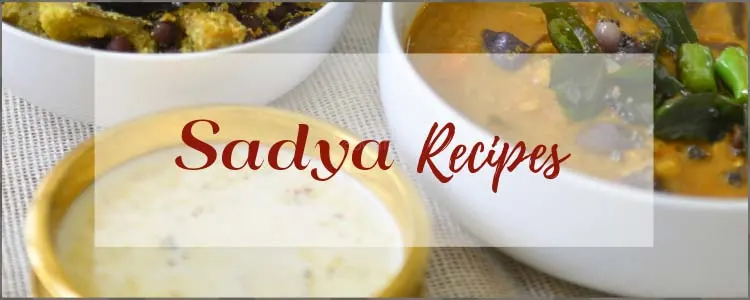
Once the festivities end and everyone went their separate ways, it was about looking forward to the next Onam. This celebration of the demon King was more than an occasion to get together and have fun, by reliving his memory we are also acknowledging that the world is not black and white, that good and evil are not defined by one’s pedigree, but purely by one’s actions. And maybe this innate understanding is what makes all Malayalis regardless of caste and creed come together for Onam.
Let this Onam be a celebration of humanity and equality.

DR.SWATHI PARAMESWARAN POTTI
Friday 20th of August 2021
WELL EXPLAINED BEAUTIFUL AND HEART TOUCHING NARRATION KEEP GOING
Kalai
Tuesday 13th of September 2016
Syama, enjoyed reading the article. So beautifully written. The journey taken back in time is impressive. Although we had our own version of Onam having been raised in Orissa, much of it stayed the same and we loved it!!!!
Looking forward to many such from you as time goes by :)
Syama
Thursday 15th of September 2016
Thanks, Kalai. I have been hearing from friends about their own Onam Memories. Much of it has changed but the spirit of the celebration still remains. Love the effort you put into it as well :-) .